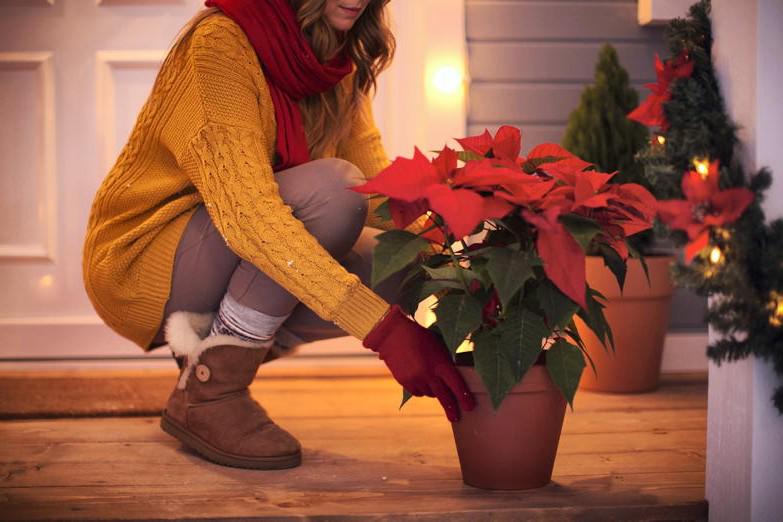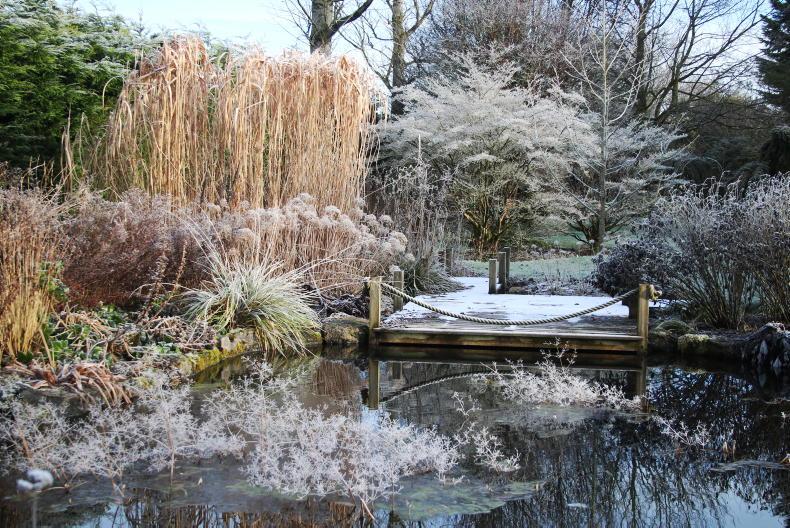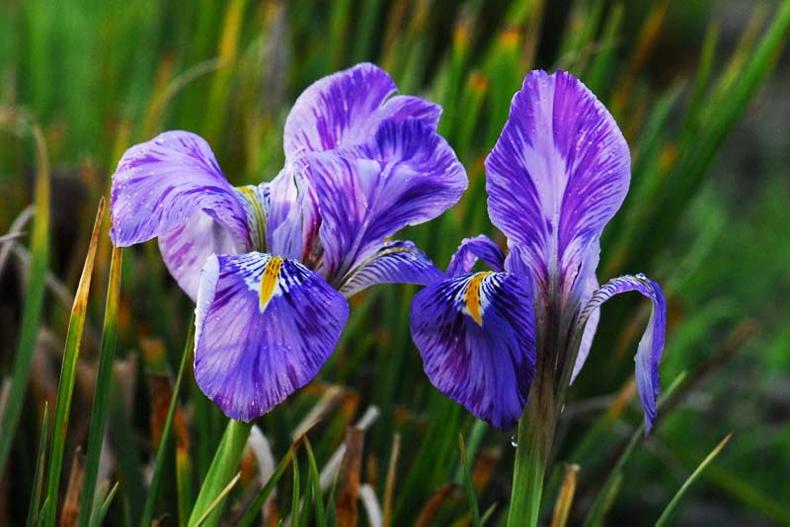Name: Mountain ash, rowan,
Himalayan rowan
Botanical name: The wild mountain ash, or rowan, Sorbus aucuparia, is seen growing all over the country in rocky, hilly areas where sheep cannot reach its shoots as a young plant. Few native trees are as good for garden use.
The mountain ash is a relatively small tree, easily accommodated, beautiful in spring as the leaves open, in early summer when the flowers open, in autumn when the berries colour and before the leaves fall.
Family: Not many trees offer such a span of decorative value. It has attractive divided foliage, very like the common ash, from which it gets its name, but it is from a different family and not related. It is a member of the rose family, the Rosaceae, related to other good berrying plants such as hawthorn, pyracantha and cotoneaster. It is an especially good tree for a country garden.
GARDEN VALUE
Apart from the popular red-berried varieties, the most commonly seen yellow-berried form is ‘Joseph Rock’, the berries starting off pale yellow and turning to deep yellow on bare branches. ‘Sheerwater Seedling’ is a vigorous upright form, red berried, that is frequently used as a street tree.
There are mountain ashes from the Himalayan region of China that are worth planting. These have pink or white fruits. Displaying beautiful ferny foliage, Sorbus vilmorinii is superb, the red berries turning pink and finally white. Vilmorin is the name of a famous French nursery.
The Kashmir rowan, Sorbus cashmiriana has white fruits on a large tree, fast-growing early to carry fruit, and the marble berries last on the tree for a long time after the leaves fall.
Growing sorbus
These wild trees are typically of fairly small size with dense branching. In contrast, when the same species is grown on good, fertile soil in a garden, it often grows luxuriantly, but berries poorly.
The garden trees are usually much bigger than the wild type, with much looser branching. As they grow older, the amount of berrying increases. Choose a part of the garden with really good drainage and the poorest soil. A dry, gravelly bank would be ideal, even on soil over rock.
It is a very wind-resistant tree and can be planted in the most windswept areas, a useful feature for an exposed garden. It makes a good group planting, or it can be used as a single tree.
While the idea of planting on dry soil is to cause some stunting, the tree will not grow unless it gets off to a good start and roots deeply. So, it should be watered well during its first two summers, or until nice steady growth is being made.

All kinds of fruit trees and bushes require good growing conditions, like the apple tree.
This is the time of year to plant fruit trees and bushes of all kinds. Most fruit plants are vigorous and very easy to grow. The main kinds of fruit for home-garden growing are apples, pears, plums, black currants, red currants, gooseberries, raspberries, loganberries and strawberries.
All kinds of fruit trees and bushes require good growing conditions — full sunshine, good fertile soil and some shelter. They also need space, although fruit trees can be chosen, or trained, to fit the space available. It is possible to grow apple trees and pear trees trained flat against a garden wall, taking up very little space. It is also possible to successfully grow raspberries and loganberries against a wall.
Strawberry plants take up very little space. Although they are usually grown in a vegetable garden, a few plants can be grown in a mixed border, tucked away behind flowers or small shrubs. Strawberries can be grown in large pots too, as can other fruits, including small apple trees, though these need close attention.
The varieties of the various fruits offered are generally the most reliable kinds, for instance, ‘Victoria’ plum or ‘Conference’ pear. A wide range of apple varieties is offered and most of these will require spraying against apple scab disease, though some kinds such as ‘Discovery’ have excellent resistance to scab. Pollination of fruit trees is not as big a problem as is sometimes presented. Only apple and pear trees need a pollinator. Bees may travel 5km and there is a fair chance of suitable pollinators somewhere nearby.
Fruit, vegetables and herbs
Plant new fruit trees and bushes. Dig over vegetable ground, removing old crops to the compost heap, unless they are diseased. Control weeds over areas of ground that will be dug over later. Spread compost and rotted manure before digging it in.
Lawn
If moss has been a problem, lawn mosskiller can be used now. Even though grass growth has slowed, occasional mowing is a good idea if the soil is not too wet. Grass tends to grow a little over winter and an occasional mowing will keep it right.
Trees, shrubs and roses
Planting of bare-root deciduous trees, hedging and shrubs can continue in good weather. Do not plant into sodden ground. Check that young trees are securely staked — wind-rocking can seriously damage young trees that are not yet wind-firm.
Flowers
Spring bulbs should be in the ground by now, but should be planted if not. Tulips can be planted quite late and still do well. Bedding plants for spring colour should be put in now. Lift dahlias, begonias and gladiolus in frosty areas.
Greenhouse and house plants
Remove all debris and dead plants and ventilate occasionally. Water very little to reduce the risk of grey mould disease. Set up a greenhouse frost protection heater to protect tender plants, such as geraniums or fuchsias. Be careful not to over-water.
Read more
Gardening with Gerry: American sweet gum
Gardening with Gerry: passion flower
Name: Mountain ash, rowan,
Himalayan rowan
Botanical name: The wild mountain ash, or rowan, Sorbus aucuparia, is seen growing all over the country in rocky, hilly areas where sheep cannot reach its shoots as a young plant. Few native trees are as good for garden use.
The mountain ash is a relatively small tree, easily accommodated, beautiful in spring as the leaves open, in early summer when the flowers open, in autumn when the berries colour and before the leaves fall.
Family: Not many trees offer such a span of decorative value. It has attractive divided foliage, very like the common ash, from which it gets its name, but it is from a different family and not related. It is a member of the rose family, the Rosaceae, related to other good berrying plants such as hawthorn, pyracantha and cotoneaster. It is an especially good tree for a country garden.
GARDEN VALUE
Apart from the popular red-berried varieties, the most commonly seen yellow-berried form is ‘Joseph Rock’, the berries starting off pale yellow and turning to deep yellow on bare branches. ‘Sheerwater Seedling’ is a vigorous upright form, red berried, that is frequently used as a street tree.
There are mountain ashes from the Himalayan region of China that are worth planting. These have pink or white fruits. Displaying beautiful ferny foliage, Sorbus vilmorinii is superb, the red berries turning pink and finally white. Vilmorin is the name of a famous French nursery.
The Kashmir rowan, Sorbus cashmiriana has white fruits on a large tree, fast-growing early to carry fruit, and the marble berries last on the tree for a long time after the leaves fall.
Growing sorbus
These wild trees are typically of fairly small size with dense branching. In contrast, when the same species is grown on good, fertile soil in a garden, it often grows luxuriantly, but berries poorly.
The garden trees are usually much bigger than the wild type, with much looser branching. As they grow older, the amount of berrying increases. Choose a part of the garden with really good drainage and the poorest soil. A dry, gravelly bank would be ideal, even on soil over rock.
It is a very wind-resistant tree and can be planted in the most windswept areas, a useful feature for an exposed garden. It makes a good group planting, or it can be used as a single tree.
While the idea of planting on dry soil is to cause some stunting, the tree will not grow unless it gets off to a good start and roots deeply. So, it should be watered well during its first two summers, or until nice steady growth is being made.

All kinds of fruit trees and bushes require good growing conditions, like the apple tree.
This is the time of year to plant fruit trees and bushes of all kinds. Most fruit plants are vigorous and very easy to grow. The main kinds of fruit for home-garden growing are apples, pears, plums, black currants, red currants, gooseberries, raspberries, loganberries and strawberries.
All kinds of fruit trees and bushes require good growing conditions — full sunshine, good fertile soil and some shelter. They also need space, although fruit trees can be chosen, or trained, to fit the space available. It is possible to grow apple trees and pear trees trained flat against a garden wall, taking up very little space. It is also possible to successfully grow raspberries and loganberries against a wall.
Strawberry plants take up very little space. Although they are usually grown in a vegetable garden, a few plants can be grown in a mixed border, tucked away behind flowers or small shrubs. Strawberries can be grown in large pots too, as can other fruits, including small apple trees, though these need close attention.
The varieties of the various fruits offered are generally the most reliable kinds, for instance, ‘Victoria’ plum or ‘Conference’ pear. A wide range of apple varieties is offered and most of these will require spraying against apple scab disease, though some kinds such as ‘Discovery’ have excellent resistance to scab. Pollination of fruit trees is not as big a problem as is sometimes presented. Only apple and pear trees need a pollinator. Bees may travel 5km and there is a fair chance of suitable pollinators somewhere nearby.
Fruit, vegetables and herbs
Plant new fruit trees and bushes. Dig over vegetable ground, removing old crops to the compost heap, unless they are diseased. Control weeds over areas of ground that will be dug over later. Spread compost and rotted manure before digging it in.
Lawn
If moss has been a problem, lawn mosskiller can be used now. Even though grass growth has slowed, occasional mowing is a good idea if the soil is not too wet. Grass tends to grow a little over winter and an occasional mowing will keep it right.
Trees, shrubs and roses
Planting of bare-root deciduous trees, hedging and shrubs can continue in good weather. Do not plant into sodden ground. Check that young trees are securely staked — wind-rocking can seriously damage young trees that are not yet wind-firm.
Flowers
Spring bulbs should be in the ground by now, but should be planted if not. Tulips can be planted quite late and still do well. Bedding plants for spring colour should be put in now. Lift dahlias, begonias and gladiolus in frosty areas.
Greenhouse and house plants
Remove all debris and dead plants and ventilate occasionally. Water very little to reduce the risk of grey mould disease. Set up a greenhouse frost protection heater to protect tender plants, such as geraniums or fuchsias. Be careful not to over-water.
Read more
Gardening with Gerry: American sweet gum
Gardening with Gerry: passion flower










SHARING OPTIONS